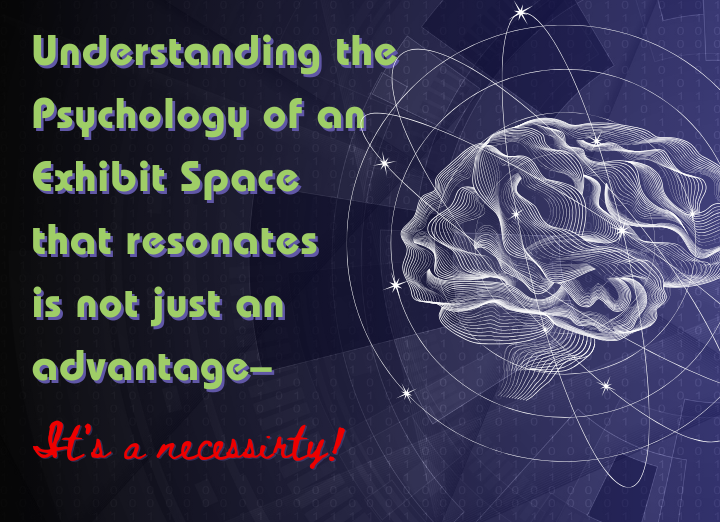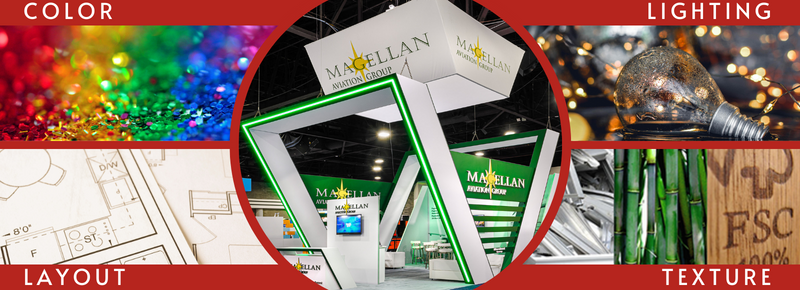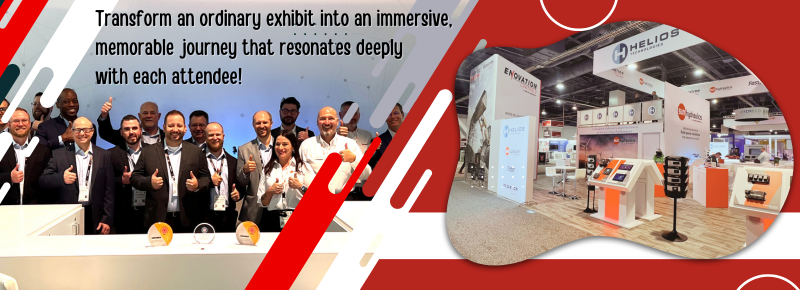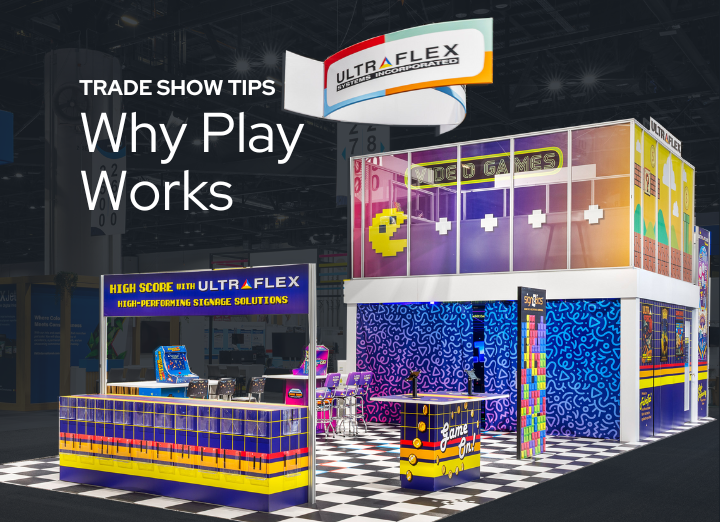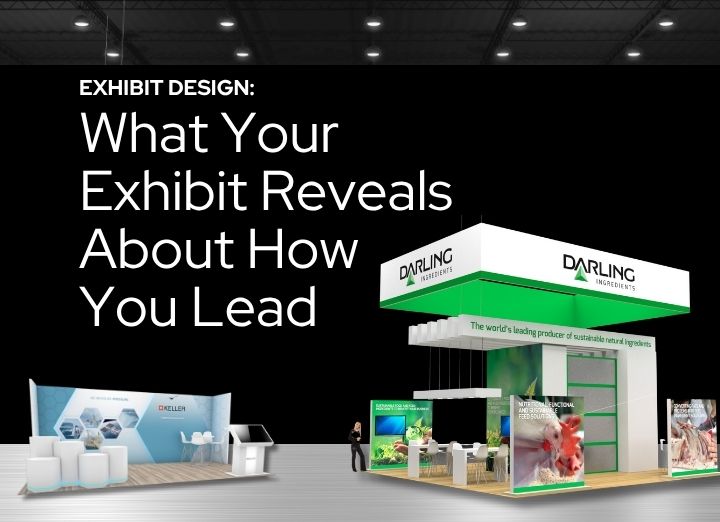In event marketing and exhibit design, understanding the subtle yet profound impact of psychology is not just an advantage—it’s a necessity.
The way we perceive space, influenced by various design elements, has the ability to shape our emotions, behaviors, and overall experience within an environment. This knowledge, when applied skillfully, can transform an ordinary exhibit into an immersive, memorable journey that resonates deeply with each attendee.
The Influence of Space on Emotions and Behaviors
Spatial psychology explores the human response to the physical environment, examining how different settings can trigger specific emotional and behavioral reactions. For event marketers and exhibit designers, leveraging this understanding means they can craft spaces that not only captivate but also connect on an emotional level.
The Role of Design in Shaping Perceptions
Design elements such as color, lighting, layout, and texture play pivotal roles in setting the tone of an exhibit. Colors, for instance, wield the power to evoke a spectrum of emotions—blue can instill a sense of calm, while red might energize and excite. Lighting affects mood; soft, warm lights invite relaxation and comfort, whereas bright, cool lights stimulate alertness and focus.
Creating an Engaging Journey With the Exhibit Layout
The layout of an exhibit guides the attendee’s journey, creating a narrative flow that can either engage or disengage. A well-thought-out path not only ensures a smooth, intuitive experience but also strategically highlights key elements, ensuring that visitors leave with a lasting impression. This journey should cater to diverse preferences and needs, making inclusivity a cornerstone of design.
The Impact of Texture and Materials
Texture and materials add depth and context to the spatial story. Rough textures might convey ruggedness and durability, appealing to an adventurous demographic, while smooth, refined surfaces suggest sophistication and elegance. The tactile experience can greatly enhance the emotional connection to the space, making the exhibit more memorable.
The Necessity of Space for Personal Reflection
Incorporating areas for personal reflection within an trade show exhibit is crucial. These spaces allow attendees to process their experiences, form deeper connections with the content, and engage in meaningful conversations. By designing these type of areas, we acknowledge the individual’s human need for both communal and personal spaces, fostering a more comprehensive and fulfilling experience.
There’s Nothing Like a First Impression
The power of first impressions cannot be overstated, especially in the context of exhibit design and event marketing. From the moment attendees have a glimpse of an exhibit space, their perception can significantly influence their emotional engagement, interest level, and overall experience. This initial reaction is both instantaneous and lasting, shaping their view of a brand and determining their willingness to interact further.
Usually, first impressions are formed within seconds, and they have a profound impact on decision-making and behavior.
They are the result of a complex balance between visual appeal, spatial organization, branding consistency, and the emotional cues conveyed by the design. A positive first impression can attract visitors, foster connections, and create a memorable experience that enhances brand loyalty. Conversely, a negative first impression may deter engagement and diminish the perceived value of the brand or product.
In designing exhibit spaces, it’s crucial to prioritize elements that contribute to a strong first impression.
This includes an attention-grabbing layout, clear and cohesive branding, accessible and inviting pathways, and interactive elements that encourage participation. By understanding and leveraging the psychology of first impressions, brands can create exhibit spaces that not only resonate with attendees on an emotional level but also significantly impact their behavior and perceptions, leading to successful event outcomes.
Spatial Flow and Navigation
Spatial flow and navigation are critical components in the design of trade show exhibit spaces, impacting how visitors interact with and move through the area. Effective spatial flow guides attendees smoothly from one point to another, ensuring an intuitive and logical progression that enhances the overall experience. This involves careful planning of the layout to avoid bottlenecks, ensure accessibility, and maintain a comfortable density of visitors, enabling easy exploration and interaction with the exhibits.
Good navigation is integral to spatial flow, involving clear signage, visual cues, and pathways that lead visitors naturally through the exhibit space. It should align with the visitors’ expectations, drawing them toward key areas of interest and facilitating an engaging journey through the exhibit.
The goal is to create a seamless experience where the space itself subtly directs movement, encouraging discovery without confusion or frustration.
Research shows that crowdedness can affect visitor comfort and engagement.
The Power of Storytelling in Spatial Design
A narrative-driven trade show design can captivate visitors, making the exhibit more memorable and emotionally impactful. Weaving storytelling elements into an exhibit space significantly impacts both the atmosphere of the space and the visitor experience. Storytelling transforms a static display into an immersive narrative journey, engaging visitors on a deeper emotional level and making the content more memorable.
Storytelling resonates deeply with humans because it is hardwired into our psyche as a fundamental way of understanding the world and connecting with others.
Through stories, we can express our experiences, emotions, and values in a relatable and engaging manner. Stories allow us to see from different perspectives, fostering empathy and building social bonds. They can aid in memory retention by intertwining information into narratives that are easier to recall than isolated facts. This connection to storytelling is rooted in our history, where oral traditions and tales were essential for passing down knowledge, culture, and lessons across generations. The power of storytelling lies in its ability to captivate attention, evoke emotions, and inspire action, making it an invaluable tool in communication, education, and entertainment.
To resonate means to evoke or elicit a strong feeling, response, or emotion.
It can also refer to the ability of an idea, image, or message to relate to someone in a meaningful or profound way, striking a chord that feels deeply relevant or personal. Understanding the psychology of space is fundamental in designing trade show displays that truly resonate. By considering how design influences emotions, behaviors, and perceptions, exhibit creators can craft spaces that not only tell a story but also evoke a profound emotional response. In doing so, we are on step closer to bridging the gap between space and psyche; designing exhibits that linger in the memories of attendees long after they’ve departed.
HAVE QUESTIONS OR WANT TO LEARN MORE? GIVE US A CALL 336.232.4800 OR FILL OUT THIS FORM. APPLE ROCK ADVERTISING AND PROMOTION, WHERE BETTER IDEAS ARE BUILT!
